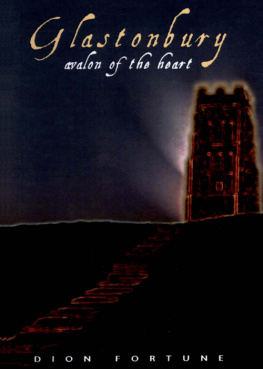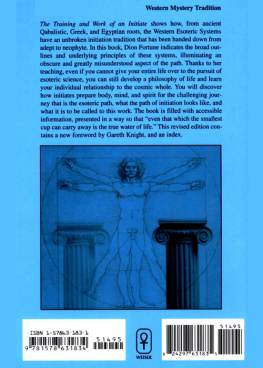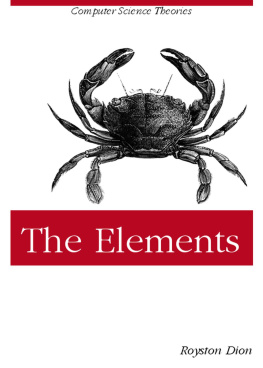Douglas Dion - Turning the Legislative Thumbscrew
Here you can read online Douglas Dion - Turning the Legislative Thumbscrew full text of the book (entire story) in english for free. Download pdf and epub, get meaning, cover and reviews about this ebook. publisher: Ann Arbor the University of Michigan Press, genre: Romance novel. Description of the work, (preface) as well as reviews are available. Best literature library LitArk.com created for fans of good reading and offers a wide selection of genres:
Romance novel
Science fiction
Adventure
Detective
Science
History
Home and family
Prose
Art
Politics
Computer
Non-fiction
Religion
Business
Children
Humor
Choose a favorite category and find really read worthwhile books. Enjoy immersion in the world of imagination, feel the emotions of the characters or learn something new for yourself, make an fascinating discovery.

- Book:Turning the Legislative Thumbscrew
- Author:
- Publisher:Ann Arbor the University of Michigan Press
- Genre:
- Rating:4 / 5
- Favourites:Add to favourites
- Your mark:
- 80
- 1
- 2
- 3
- 4
- 5
Turning the Legislative Thumbscrew: summary, description and annotation
We offer to read an annotation, description, summary or preface (depends on what the author of the book "Turning the Legislative Thumbscrew" wrote himself). If you haven't found the necessary information about the book — write in the comments, we will try to find it.
Turning the Legislative Thumbscrew — read online for free the complete book (whole text) full work
Below is the text of the book, divided by pages. System saving the place of the last page read, allows you to conveniently read the book "Turning the Legislative Thumbscrew" online for free, without having to search again every time where you left off. Put a bookmark, and you can go to the page where you finished reading at any time.
Font size:
Interval:
Bookmark:

Turning the Legislative Thumbscrew

Minority Rights and Procedural Change in Legislative Politics
D OUGLAS D ION
Ann Arbor
T HE U NIVERSITR OF M ICMGAN P RESS
First paperback edition 2001
Copyright by The University of Michigan 1997
All rights reserved
Published in the United States of America by
The University of Michigan Press
Manufactured in the United States of America
 Printed on acid-free paper
Printed on acid-free paper
2004 2003 2002 200 1 5 4 3 2
No part of this publication may be reproduced, stored in a retrieval system, or transmitted in any form or by any means, electronic, mechanical, or otherwise, without the written permission of the publisher.
A CIP catalog record for this book is available from the British Library.
Library of Congress Cataloging-in-Publication Data
Dion, Douglas, 1961
Turning the legislative thumbscrew : minority rights and procedural change in legislative politics I Douglas Dion.
p. cm.
Includes bibliographical references and index.
ISBN 0-472-10820-4 (cloth)
I. United States. CongressRules and practice. 2. Parliamentary practiceUnited States. 3. Legislative bodiesUnited States. I. Title.
KF4937.D56 1997 | |
342.73 '05-dc21 | 97-22819 |
CIP |
ISBN 0-472-08826-2 (pbk. : alk. paper)
ISBN13 978-0-472-10820-6 (cloth)
ISBN13 978-0-472-08826-3 (paper)
ISBN13 978-0-472-02269-4 (electronic)
For Mary
yet behold, always as you turn your legislative thumbscrew, and will press and even crush till Refractories give way...
Thomas Carlyle, The French Revolution
In this book, I try to understand why majorities within legislatures take away minority rights at particular times rather than others. The main context for studying this problem is the nineteenth-century House of Representatives, an institution that over roughly six decades enacted a number of procedural reforms that relieved the minority of its most effective tools for obstruction. The explanation for the particular timing of these changes, I argue, can be found in the strategic interaction of majorities and minorities, and in the realized fortunes of electoral contest. When majorities are small, they are more cohesive. A cohesive majority forces the minority to forgo hopes of dividing and conquering the majority party. As a result, minorities will utilize obstruction, attempting to stop the majority from implementing its policy program. Majorities, recognizing the problem of obstruction, enact procedural changes that deprive the minority of the tools of obstruction.
In making this argument, I have two basic aims. The first is to focus attention on legislatures as interesting sites for the study of issues of majority rule and minority rights. It would, of course, be ludicrous to say that legislative scholars havent been concerned with these issues, but for the most part they have been concerned with the majoritarian or nonmajoritarian effects of legislative arrangements. Does the committee system undermine the majoritarian possibilities of the American political system? How does legislation alter the structure of minority rights within society? These and other questions are extremely important. At the same time, however, the ability of many legislatures to determine for themselves the rules under which they will be governed suggests that we look at the institutional structure of legislatures as an instrument for the construction of a regime of minority rights within a majoritarian institution. We know exceptionally little about minority rights within legislatures. This book attempts a contribution, with hopes that others will follow.
The second aim is more thoroughly methodological. The study of American political development has, in my view, made a stunning contribution to the literature on American politics. Most importantly, this literature has eroded the aura of American exceptionalism that falsely justifies the continued disjuncture between the study of American politics and the study of comparative politics. A key argument in that transformation has been the recognition that structural-functional models are radically incomplete. In many ways, the literature on legislative organization has yet to come to grips with this finding. Thus we often find the ghost of some dead sociologist lurking in the dreary garden of American legislatures: legislatures change in response to their environment. One of the purposes of this book, which is one I believe I share with the literature on American political development, is the desire if not to exorcise this pernicious apparition, then at least to force it to see reason. The response to environmental changes is always strategic, a result of the interplay of state officials within an institutional context.
I also follow the literature on American political development in using comparative evidence to check accounts about American politics. With notable exceptions, the study of legislative politics in the United States is primarily centered on the study of the U.S. Congress and in particular the House of Representatives. While more studies of the Senate are being produced, we are still far from equal representation of the two houses in the field of legislative studies. And, again with exceptions, our understanding of the House vastly exceeds our understanding of state legislatures, or even non-U.S. national legislatures. The solution is not to have other people do the checking for theories of the U.S. House, but for those who look at the House to begin thinking comparatively.
But where I depart from much of the literature on American political development is my insistence that institutional transformation be explained as a result of strategic calculation. I mean only that I insist that my explanations be formally modeled, not that anyone elses should. My motivation for doing formal modeling is a bit perverse, and in these times when imperialist motives are always suspected, let me be clear about them. Reading American political history with an eye toward theoretical explanation reveals either that those theoretical explanations occupy perhaps a scant paragraph or line here and there (the average historian), or that the theoretical explanations are so rich and multifaceted that one could not imagine what pattern of historical occurrences they would not fit (the average political scientist). Let me state here that I am well aware of the pitfalls of an obnoxious concern with falsification and that I am also aware that we should see the world in all its delicious variety. Call it the malaise of modernity or what have you, but I do not find those sorts of approaches ultimately satisfying. My preference is for a theory that can easily be shown to be incorrect. Exploring the reasons for its failure is much more interesting than a too-easy incorporation of every new fact that comes along.
At the same time, however, I recognize that the formal literature has treated Clio as cordially as the Wicked Witch treated Dorothy. Consequently, my aim in this work has been to try hard to take the historical side of the enterprise as seriously as the formal side. No one is more aware than I how the historical record eludes the grasp of the formal theory at many places. My modest claim is that no one
Font size:
Interval:
Bookmark:
Similar books «Turning the Legislative Thumbscrew»
Look at similar books to Turning the Legislative Thumbscrew. We have selected literature similar in name and meaning in the hope of providing readers with more options to find new, interesting, not yet read works.
Discussion, reviews of the book Turning the Legislative Thumbscrew and just readers' own opinions. Leave your comments, write what you think about the work, its meaning or the main characters. Specify what exactly you liked and what you didn't like, and why you think so.










